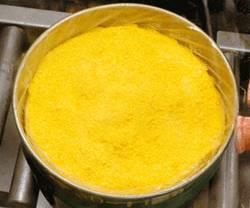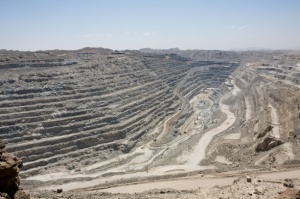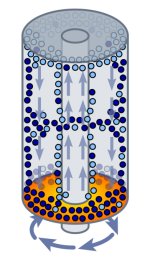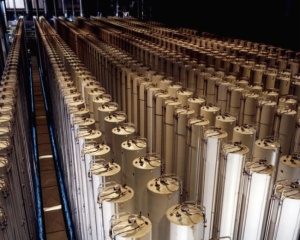I thought I would try something else this time. Like many of you, I’ve been following (as best I can) the U.S./Iran “talks” regarding Iran’s ambitions to obtain enriched uranium with the ultimate goal of having either 1) nuclear weapons-grade material or 2) nuclear fuel for nuclear power plants. A small minority of you may think that Iran only wants the material for use in producing electricity by nuclear means. I disagree. But let’s first look at one of the key issues in the negotiations; centrifuges.
DAY ONE. I was listening to yet another news segment about the U.S./Iran negotiations and I thought “What the hell are the damn centrifuges used for, why are so many needed and how many does Iran want?” How does a centrifuge “enrich” uranium? How rich does it have to be? How long does it take? How many ‘fuges can a centrifuge ‘fuge? I really wanted to know. My engineering background demanded it. (If you already know, you don’t have to read any further.)
MY STARTING POINT. I turned to a long-time friend who studied nuclear engineering (at West Point as I recall) and who later was a tank battalion commander in Vietnam. He provided me with valuable introductory information and directed me to a few websites. Thanks, Steve.
Now I don’t want to overwhelm anybody with highly technical information. Stick with me, though, and maybe we’ll all better understand what’s being talked about and feel better (or worse) about the future. I don’t want any scientists criticizing me about over simplification or errors. Any errors, like authors like to point out, are mine and mine alone. I have obtained information from a few sources, which I will list at the end. I encourage you to check them out.
GETTING URANIUM FROM THE GROUND. Uranium (U) is a common element found all over the world that emits only a very tiny level of natural radioactivity. Uranium is extracted from thousands of tons of ore. Uranium ore is then processed (separating uranium from the dirt and rocks) to create uranium oxide, which can be “enriched”. This oxide stuff is called “yellowcake”. Uranium needs to be “enriched”, otherwise it just doesn’t do anything for us. Let’s find out what enrichment is. But, first we need to understand what uranium is made up of.
URANIUM ISOTOPES. Uranium found in nature consists almost entirely of two parts (isotopes). These two isotopes, U-235 and U-238, are thoroughly mixed or bound up together in natural uranium. Natural uranium has about 1% U-235 and 99% U-238. I won’t discuss the U-238 isotope which has its uses but doesn’t concern us here.
The thing to understand here is that uranium, when extracted out of ore, is comprised of only a very tiny, tiny bit of important U-235 and a lot of undesirable U-238.
SO WHAT IS ENRICHMENT?. The biggest problem in creating nuclear reactor fuel or a nuclear weapon is to separate out as much U-238 as you can, leaving yourself with uranium that has a sufficiently higher concentration of U-235 to go boom. This is enrichment. Even though uranium-235 and U-238 isotopes are chemically identical, they have a very, very slight difference in mass. This difference in mass makes it possible to increase or “enrich” the percentage of U-235 in the uranium that was pulled out of the ground. The enrichment process makes use of this small mass difference. Enrichment actually means that the U-238 is separated out, concentrating or enriching the uranium. It’s not easy. This is where centrifuges come in.
CENTRIFUGES-WHAT DO THEY DO?. Remember, we want to increase the ratio of the U-235 isotope to U-238. The uranium is made into a gaseous form using a powerful acid. The gaseous form is called uranium hexafluoride, is easier to work with, and is inserted into a centrifuge. Actually, a lot of centrifuges are “chained” together in cascades. The spinning centrifuge causes the slightly heavier U-238 (dark circles) to go toward the outside walls of the centrifuge while the (slightly) lighter U-235 tends to stay in the center of the centrifuge tube. The uranium material, in gaseous form, is then extracted from the center of the centrifuge and sent to the next centrifuge.
It has slightly more U-235 than it did before. Let’s understand that the centrifuge process is not very efficient.
After the uranium is a tiny bit enriched in one centrifuge, this slightly concentrated uranium is extracted and put into another centrifuge. Each centrifuge passes a slightly more concentrated product to the next centrifuge and returns a slightly less concentrated residue to the previous stage.
The output of this second centrifuge is put into yet another centrifuge and so on, until it’s eventually put back into the first centrifuge to start over. The centrifuges are a technological challenge. They’re highly machined and spin in the range of 100,000 revolutions per minute (rpm). Until recently, the technology for these devices has been out of reach of most countries. There are better centrifuges and more efficient technologies being developed and tested. Iran wants these devices as well.
WHY DOES IRAN NEED SO MANY CENTRIFUGES? The answer is because each centrifuge is very inefficient. Each one gets rid of a very tiny bit of U-238. Simplifying, the concentration of the U-235 component is only improved by a gram or so by each centrifuge. Uranium needs lots of trips through lots of centrifuges. Remember, the uranium we started with consisted of less than 1% U-235. Since each centrifuge enriches such a tiny amount, this process of spinning and repeating can take a very long time to enrich the uranium to a 5% level of U-235 needed in a nuclear power plant. You need a long time and a lot of centrifuges or both.
That’s one reason why Iran now has 20,000 centrifuges, is working to get 50,000 and ideally needs 200,000. In a minute, I’ll explain why negotiating with Iran to limit them to 5000 centrifuges is more dangerous to the world than 20,000 or more centrifuges. In addition, if Iran does succeed in building a nuclear power plant, the byproduct of the plant is plutonium (Pu239) which is extremely dangerous and can also be used to make nuclear weapons.
OPTIONAL NOTE: Production of energy in nuclear reactors (or nuclear weapons) comes from the ‘fission’ or splitting of U-235 atoms, a process which releases energy in the form of heat. This heat is used to make steam which drives electrical generators. This fission reaction is the basis of operation for most of the world’s current nuclear power stations and is the reason why uranium is such a valuable mineral resource. Uranium enrichment is a sensitive technology that is (supposed to be) subject to tight international control.
As I said earlier, it turns out that spent fuel rods from nuclear power plant reactors contain a byproduct. This byproduct is plutonium or Pu-239. This material must also be protected from exploitation, because Pu-239 is also fissible and can be used for making nuclear weapons.
It is known that 25 kilograms (about 55 pounds) of 90% enriched U-235 is needed to make a nuclear weapon. Starting with less than a gram or so of enriched U-235, it takes a long time and a lot of centrifuges to produce 55 pounds of the stuff. Basic arithmetic from what I have read says that 5000 centrifuges running for 12 months will produce the 25 kilograms needed for a bomb.
HERE IT IS: THE IRONY OF URANIUM ENRICHMENT. Uranium only needs to be enriched to 5% to be useful for nuclear power generation but 90% enrichment is needed for a nuclear weapon. Now most everyone would naturally think that going from 5% to 90% enrichment would take a heck of a lot of additional time (85%) or way more centrifuges. The physics of the enrichment process, however, tells us that obtaining 5% enrichment requires most of the work (almost 70%) and getting to 90% takes only a little bit more work (about 30%). The long term agreement with Iran would limit the numbers (and kinds) of centrifuges Iran can use to enrich uranium. The reality is that the potential Iran nuclear agreement would limit Iran to the number of centrifuges needed for a weapon but far too few for a nuclear power program! You need tens of tons of material to fuel a nuclear power plant for a year but only 25 kilograms to make a bomb.
You can fact-check everything I just said, anytime you want. The bottom line is that with only 5000 centrifuges available, Iran can make a bomb in about a year. Assuming an Iranian nuclear power plant would require 25 tons of enriched uranium every year, with these same 5000 centrifuges, it would take Iran over 600 years to make enough fuel to run a nuclear power plant for one year!!! Right now, this is why Iran has only one nuclear power plant and Russia is selling them all the fuel for this plant.
WHAT SHOULD WE (THE UNITED STATES?) DO? Using (a lot of) input from my colleague and tweaking it a bit, here are some possibilities:
Possibility 1: Keeping and toughening the current sanctions. Add more sanctions. Everything that Iran has accomplished so far has been done in spite of sanctions that are already in place. Russia built Iran a reactor with the sanctions in place and has agreed to build more. So if we continue the sanctions, we end up trusting, with no ability to verify, that our buddies, the Russians, won’t let Iran be involved with extracting Pu239 from the reactors’ spent fuel rods. So having Russia also agreeing to the “deal”, (including verifications of reactor use and fuel rod disposition) makes it a much more powerful agreement.
Possibility 2: Bombing: This is probably not as effective as it sounds. Iran’s underground nuke sites are too dispersed and deep to guarantee their complete elimination through bombing, so all bombing would accomplish is to slow the Iranians down, which is what the “deal” will accomplish in its worst case. The difference is that bombing will really piss the Iranians off and make them more determined to ultimately succeed. If we destroy the Russian-built “peaceful”’ reactor in the bombing, we may risk a nuclear show-down with Russia, which would make the problem with Iran look minor.
Conclusion: The “deal” being negotiated will just slow Iran down, which is all that either of the other options would accomplish. The deal won’t stop Iran from developing a nuclear weapon. It’s going to happen. The only trick in our bag is in the verification of 1) Iran shutting down some or all of their centrifuges and 2) giving up the depleted reactor fuel rods containing plutonium (Pu-239), if they get that far. If you’re not scared by now, you have to realize that a smaller amount of plutonium than our old friend enriched U-235 is needed to make a weapon.
We have to hope that international inspection agencies will ensure the Iranians comply with the terms of the agreement and immediately report if they are cheating. No payoffs to inspectors, no payoffs to agencies, no Russian inspectors, no Iranian inspectors, no Iraqi inspectors. No inspectors held hostage. No family members held hostage. Guaranteed 100% open access to every facility in the country, including military sites. VERIFICATION, VERIFICATION, VERIFICATION, VERIFICATION, NO TRUST.
A FINAL COMMENT. I hope the U.S. negotiating team has some recognized nuclear engineers and scientists and isn’t comprised only of politicians, celebrities, party donors, hangers-on, legacy-seekers, hairdressers, makeup artists and wannabes. Actually, I don’t want anyone on the team who is using these negotiations to enhance their own resumes or help them ascend to higher status. Please just concentrate on keeping the world safe for a little bit longer. Hey, we have North Korea. It appears we can’t really negotiate successfully with Iran. How are we going to negotiate with North Korea?
References:
- Michael Morell – The odd reality of Iran’s centrifuges: Enough for a bomb, not power. http://www.politifact.com/truth-o-meter/statements/
(For Michael Morell’s article, go to politifact.com, select Truth-O-Meter TM and then search for “uranium centrifuges”. Scroll down to February 25, 2015 for the article.)
- Steve May – Former nuclear engineering student, tank battalion commander, master marketing manager and delightful international traveling companion.




